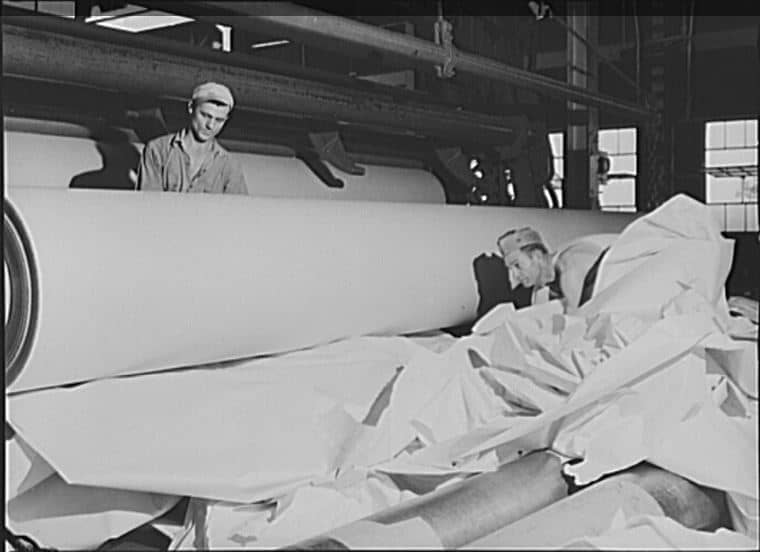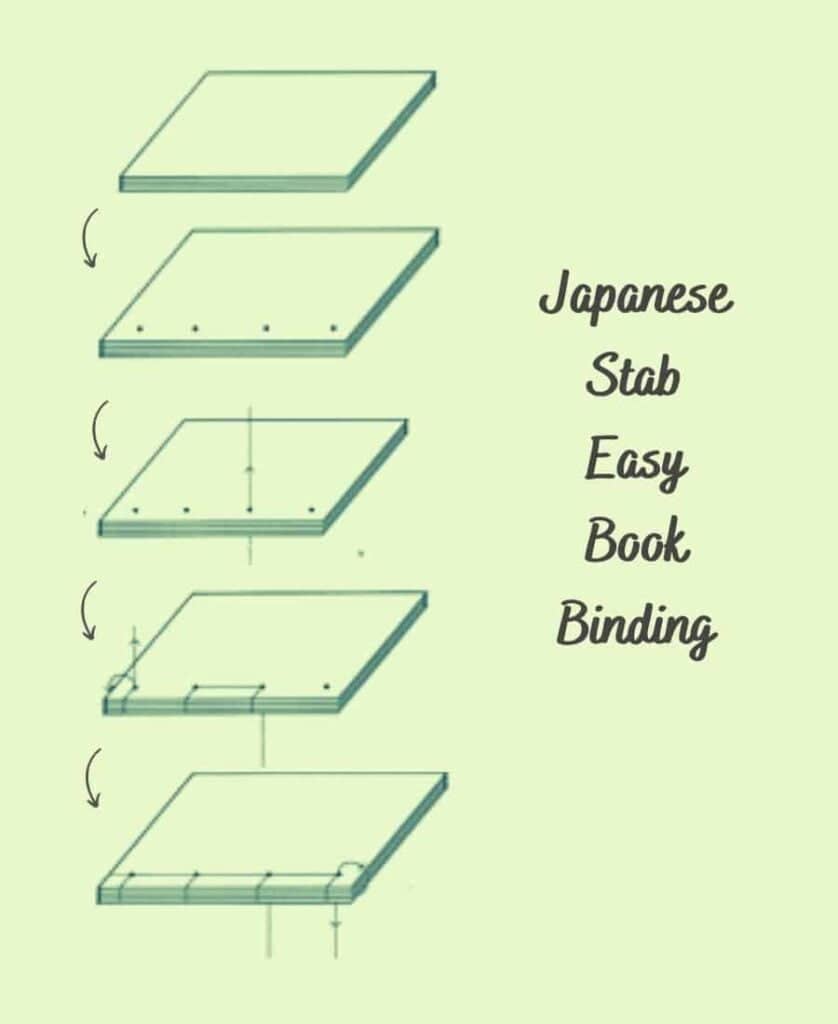What are the Materials Needed to Make Handmade Books?
A book is an important form of interaction between both the reader and the writer. Prior to the invention of the printing press, books were mostly handcrafted, inscribed with royal designs and patterns and were a combination of loose sheets of paper tied together using strings or a piece of cloth.
With the upsurge of technological devices, the ancient craft of binding handmade books saw a decline.
However, it still remains an archaic and fascinating form of crafts used by individuals all over the world to add a personal touch to the content produced.

If you are here to learn or explore some such unique methods, then you have come to the right place. Here, you will learn about various types of bookbinding-related methods, easy steps to implement them, and create your own personalized notebook and a few video tutorials that will help you learn the art conclusively.
An extra tip for you is to use loose leaf papers when personally binding a book.
Loose leaf papers are loose sheets of paper that come in various sizes and pre-punched holes that are best for purposes such as note-taking in class, assignments, arts and crafts, sketching and drawing, journaling, diary entries, and even office-related work.
They have been globally used due to their ease of removal or addition of papers to the already existing stack in case of editing or updating.
Now that you know most of what is needed, let’s dig in and explore the various types of bookbinding methods and how you can put them into use with basic materials available at home.
Let’s begin!
DISCLAIMER: PaperCanyon is reader-supported. If you make a purchase through links on our site, we may sometimes earn a commission at no additional cost to you. As an Amazon Associate, we earn from qualifying purchases.
Types of Bookbinding Methods
When it comes to the styles of bookbinding, the sky is the limit! You can creatively stimulate your thoughts with ideas by having a glance at various methods of bookbinding. You can pick any one of the following methods which you think suits your purpose the best:
- Saddle Stitching
Saddle stitching is primarily used for books with a lesser page count and is thus comparatively thinner. It is the simplest form of bookbinding in which pages are stapled together after folding. It is used for single-issue comic books, workbooks, calendars, catalogs, booklets, workbooks, and magazines as most of them have a smaller page count.

- Perfect Binding (Softcover)
Perfect binding is another bookbinding method used for trade paperbacks and softcover books. For this type of binding, loose leaf papers are folded, gathered, sewn, and glued onto a cover. This gives the binding a squared-off spine.
- Case Binding (Hardcover)
Case binding is nothing but hardcover book binding. In this method of bookbinding, loose leaf papers are folded, gathered, and sewn. Post which a ‘case’ is made by folding and gluing a printed sheet of paper around at least three pieces of greyboard. After this, the pages are glued onto the case using a few extra sheets of paper called endsheets. This results in an entirely casebound book.
- Board Bookbinding
You must have observed board bookbinding mostly on children’s books. For this type of bookbinding method, pages are printed on a thick paperboard. They are then gathered onto a thick bookblock that has a printed spine. However, this method is not used with loose leaf papers.
- Wire Binding
Wire binding is a method of bookbinding in which loose leaf papers are wired together mechanically. Here, pages are assembled together, trimmed and holes are punched along one side. The holes being punched, of course, also depends on whether you are using loose leaf papers and if so, then how many punched holes does it contain. Later on, a wire is inserted and clamped down through these holes. This type of binding is often used for manuals and cookbooks.
- Spiral Binding
Spiral binding is mostly done at stationery stores or other paper stores, but this can be as easily done at home if you have the right equipment and time. In this type of binding, pages are assembled together and trimmed, and holes (if not using loose leaf paper) are punched on one side of the stack of papers. A plastic spiral is then threaded down through these holes. Spiral binding is yet another type of binding that is used for manuals and cookbooks primarily.
Wire binding and spiral binding have both been traditionally used at bookbinding stores or paper stores, and are rarely used to produce homemade notebooks. Furthermore, these are not the only methods used to produce simple notebooks, but these are the most commonly used types. You will come across a few of those in the tutorial videos available below.
Now that you know about all types of bookbinding methods, let’s learn the ancient art of handmade bookbinding and how to master it. Let’s go old school because that is the best kind of school, right?
Simple Bookbinding Methods
There are various simpler than ever bookbinding methods that can be used to produce an authentic piece of art.
Materials required:
- 3-punched holes loose leaf paper/ Normal Paper
- Cotton thread
- Needle
- Ruler
- Compass (to make holes in the sheet of paper if you are using normal paper)
- Needle threader (optional)
Saddle Stitch Bookbinding: Going old school to make something new!
You already know what saddle stitch bookbinding is. So let’s practically find out how you can creatively infuse that into your everyday life and create a spectrum of wonder.
Procedure:
- In order to produce a bound book using this method, you will require four to six sheets of loose leaf papers, or plain papers and a single sheet of card that will make the cover.
- Fold all the sheets of loose leaf papers/ plain papers in half. If it is an A4-sized sheet, then fold it down to turn it into an A5-sized sheet.
- If you are using plain paper, then you need to punch holes in it. On the other hand, if you are using loose leaf paper then you can skip this step. Take a compass and mark the center of the folded paper. Now, make two more marks equidistant from the center of the paper on either side of the crease of the folded line. Now, push your compass through these holes.
- Now, place this plain sheet on top of another one to punch holes at the exact same place. This would avoid misplaced holes and make the process of sewing easier and hassle free. Do this for all the plain sheets of paper including the card.
- Get ready for some needlin’ around. Get your needle and start stitching by placing it at the center and then pushing it to the back of the book. Push it back through the top hole to the center and repeat the process for the lower hole.
- Repeat this process one more time if you are not satisfied with the strength of the stitches sewn.
- Tie a knot once you are finished and trim off the excess thread.
Japanese Stab Easy Bookbinding
Japan is already renowned for its paper arts such as origami. It does not lag behind when it comes to bookbinding, be it with plain paper or loose leaf paper. Let’s learn how to make this culturally infused handbook to give it an elegant and authentic appeal.
Procedure:
- In order to produce a book using this method, you will require six to eight sheets of loose leaf papers or normal paper, and two single sheets of card that will make the cover.
- If you are using plain paper, then you need to punch holes in it. On the other hand, if you are using loose leaf paper then you can skip this step. Mark a 15 mm margin on the page using a ruler. Now, mark 15 mm at the top and bottom of this margin. Divide the distance between these two marks into three by marking another two points on the margin.
- Take the compass and punch holes on all four points. Use this page as a template for another one and continue this process until you have marked all the sheets, including the card covers.
- Now, hold the book carefully and securely. Thread your needle from the center hole at the bottom end through to the front side of the book. Pull tightly and hold on to the end of the thread.
- Sew the thread around the spine and back through the same hole, thus making a loop. Push the thread on to the other hole at the center and pull it tight.
- Sew it around the spine of the hole, then down towards the backside of the book and up from the topmost hole. Pull the thread tightly.
- Now clamp the thread towards the bottommost hole, the only one that is yet to be sewn. You can do this by successively sewing your way down to the last one.
- Just repeat the process in reverse.
- Upon completion, put on a tight knot at the back end of the book, and your culturally prolific Japanese Stab Book Binding is ready to use!
For further clarification, you can use the image provided below.

Videos of Bookbinding Tutorials
In order to help you grasp the concept of bookbinding better, we have compiled a few DIY tutorial videos. Have a glance at what you like, and start experimenting!
DIY Perfect Bookbinding Tutorial | Sea Lemon
This tutorial consists of two ways of binding books with easily available materials including paper (which can be replaced with loose leaf papers) and PVA glue.
The tools used for this purpose are clips (binder, bag, or hair clip will do just fine), a book press (alternatives include vice or clamps), and a glue brush.
After gathering the materials, you will learn how to align the paper, apply glue and ensure that the papers (or loose leaf papers) stay in one place upon completion. You can design the cover with your own creative skills.
DIY Kettle Stitch Bookbinding Tutorial | Sea Lemon
The video starts with yet another alternative video by the same YouTuber – Sea Lemon – on ‘DIY Textblock for Case Binding’ in which a case is made out of stitching and sewing papers together.
Kettle stitch binding is mostly used for casebound books and the stitching portion is done before applying glue to make the entire textblock, or notebook.
While watching, please keep in mind that this tutorial is only for the stitching portion of the notebook. If you would like to learn how to proceed with various other crafts of bookbinding that come afterward, then you can watch other tutorial videos by the same YouTuber under ‘Bookmaking Project Playlist | Sea Lemon’.
The tutorial further teaches you various techniques of tying the paper, how to tie knots such that the notebook does not disintegrate and such. So what are you waiting for? Click on the link and begin your creative sojourn.
French Link Stitch Bookbinding | Sea Lemon
If you are looking for a chic and stylish sewn pattern for your notebook, then stitch the French Link Stitch.
It is a criss-cross pattern across the spine of the notebook which provides an archaic look to the casing of the notebook.
The supplies needed for this book could be a tad bit high maintenance but the end product is definitely worth it.
You will require the following supplies: cardstock, letter size paper, binding needle, thread, Beeswax, scissors, and POSCA paint pens.
In this tutorial, you will also learn how you could design your cover pages, the precise measurements necessary to make a French Link Stitch Notebook, and how to bind the papers using a thread.
Frequently Asked Questions
What is the size of loose leaf paper?
Loose leaf paper comes in various sizes starting from A4, A5 and A6. The standard size of a loose leaf paper is 10 x 8.5 inches. The size that you pick will usually depend on the type of work you are doing. For example, A4 size is generally used by high school or university students to make notes and practice math. A6 is a commonly used journal size and can be turned into a travel journal, a personal journal or for diary entry.
What are various other ways to bind loose leaf paper?
Loose leaf paper can be bound in various ways if you would like to add a personal touch and make your own binding. You can use the saddle stitching method for making thinner notebooks (4 to 6 sheets per notebook; excluding the card covers) or the kettle stitch method to make thicker notebooks.
You can also use the perfect binding method for softcover books and the case binding method for hardcover books. Again, this entirely depends on the sort of notebook that you are looking to create.
Can I bind a loose leaf paper book using a stapler?
Yes, you can bind a loose leaf paper book using a stapler. All you need is a stapler and some duct tape. You can staple the pages together and use duct tape across the spine of the book to give it a chic appearance. You can use red duct tape on a black stapled sheet of paper to give it a creative spurt, or any other color of your choice. Do keep in mind that this method is used for small amounts of loose leaf papers, or plain sheets of paper.
What is a loose leaf notebook?
A loose leaf notebook is a notebook made out of loose leaf papers. It is easier to make a notebook out of loose leaf papers because if need be papers can be added or removed from the notebook being used at hand.
What is the simplest method to bind paper to make a notebook?
The simplest method to bind paper to make a notebook is through book rings. They are available at any office supply store and come in bunches. If you have loose leaf papers, then all you have to do is insert the ring through the holes to clasp the papers together. You can also unlock the ring in case you want to update something on a sheet of paper located in-between.
Can I make a journal out of loose leaf papers?
Yes, you can make a journal out of loose leaf papers. The preferred size for this purpose is A6, and loose leaf papers are available in stacks and various styles – leatherbound or colored – and come with pre-punched holes which makes the process of compilation all the more easier.
Conclusion
Now that you know various ways to make handmade books, I am sure you will try this at your home or your workplace and create some wonderful and beautiful books with simple binding methods.
You can refer to Wikipedia to know more about book binding.
I am sure you might have your own ways to do your book binding.
You can share those tips and techniques here in the comment section for others to benefit from it. We will also try to include it in our article on “How To Make Handmade Books With Simple Binding Methods?” when we next update this article.

Avni Deopura
Content Writer
An SEO Expert, a Prolific Content Writer, and a dreamer currently pursuing a postgraduate degree in Master of Science in Psychology from St. Joseph’s College of Arts and Science. She is working as a Content Producer and Social Media Analyst.
End of – “How To Make Handmade Books With Simple Binding Methods?”
Related Articles
- Tombow Mono Zero Eraser Refills Review: Are They Worth It?

- Tombow Mono Zero Eraser Review: The Best Eraser for Precision Work?

- 6 Best Pencil Cap Erasers for Kids: A Must-Have School Supply

- 7 Best Toy Erasers for Kids: Top Picks for 2023

- 7 Best Erasers for Artists: Top Picks for Clean and Precise Erasing

- DIY Eraser Crafts: Beyond Erasing













